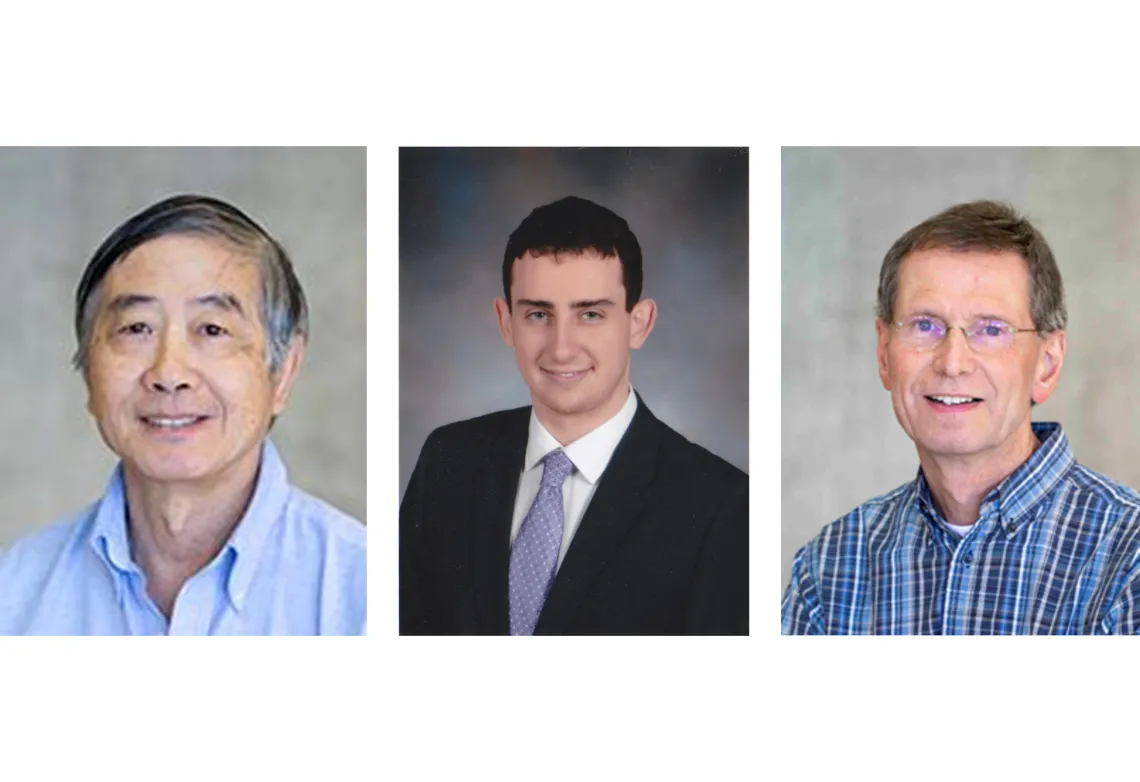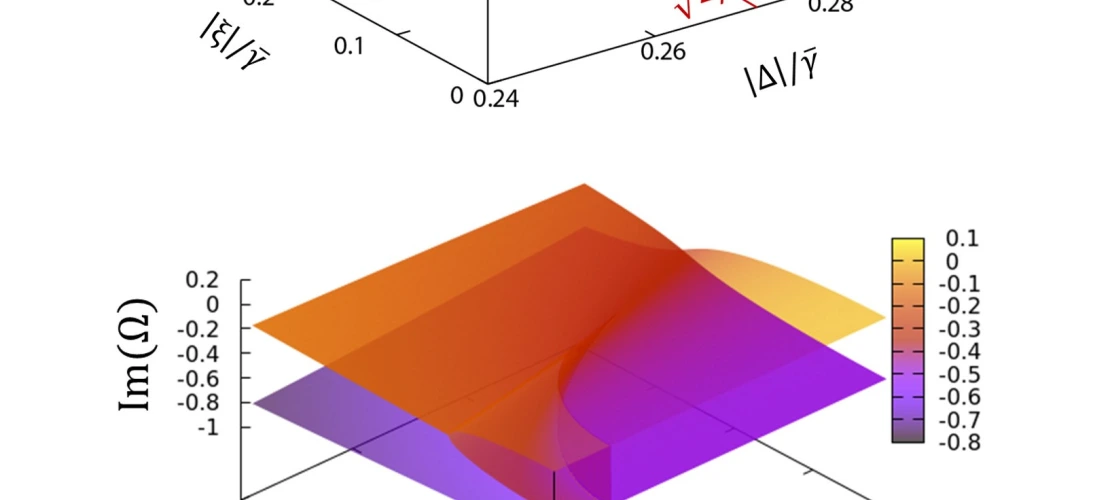Semiconductor laser research by recent Physics graduate Matt Spotnitz highlighted as Editors' suggestion

(From left to right) Prof. Nai Kwong, Dr. Matthew Spotnitz, Prof. Rolf Binder
A paper on semiconductor quantum well microcavity lasers by recent UA Physics graduate Dr. Matt Spotnitz and Profs. Nai-Hang Kwong and Rolf Binder was selected as an Editors' suggestion in Physical Review B.
A semiconductor quantum well (QW) microcavity laser is microscopically a highly coherent, driven-dissipative phase of electrons, holes, and the cavity light field. Electrons and holes, being charged particles, interact via the attractive Coulomb interaction, but also via the cavity light field. If the incoherent pump source is above a certain threshold and the laser is 'switched on', the laser light, being coherent, can be called the system's order parameter. There are useful formal analogies between semiconductor lasers and Bardeen-Cooper-Schrieffer (BCS) superconductors, with electrons and holes corresponding to Cooper pairs. An important concept in the original BCS theory for superconductors in thermal equilibrium is that of an energy gap in the excitation spectrum of the superconducting state. However, in some superconductors, e.g. those with dilute magnetic impurities, there is a gapless regime in which the order parameter is finite, and the system is superconducting, but the energy gap is zero. This work shows that, in analogy to gapless superconductivity, a gapless lasing parametric regime, in which the frequency gap in the fluctuation spectrum is closed, exists for steady-state semiconductor lasers. The gap opens when the laser intensity exceeds a threshold. This gapless-to-gapped transition occurs at a third-order exceptional point.




